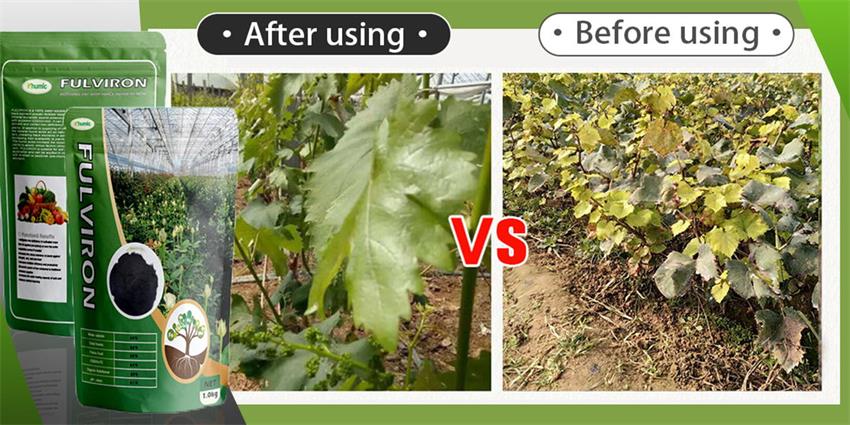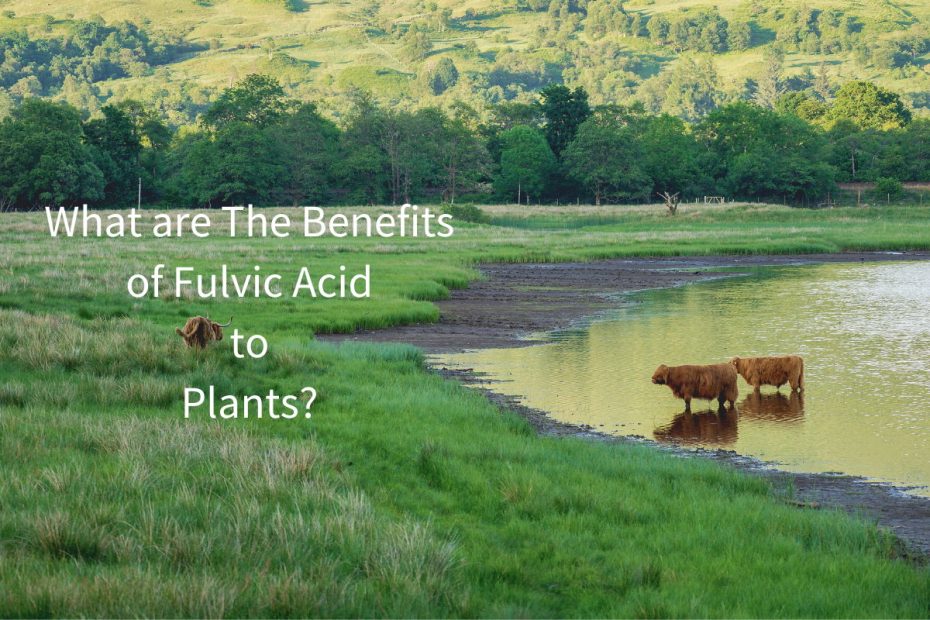Introduce
Plants, like humans, need a balanced diet to thrive. While water, sunlight, and nutrients in the soil are crucial, there is another element that is often overlooked but plays an important role in plant growth—fulvic acid. Derived from decomposing organic matter, this organic compound is a powerful contributor to plant growth and health. Let’s delve into the world of fulvic acid and discover the many benefits of Fulvic Acid for Plants.
What is Fulvic Acid?
Fulvic acid is a natural compound found in soil, sediments, plants, and large bodies of water. It is one of the best biostimulants found in nature and one of the three substances that make up humus (organic matter in soil). It is produced by microbial degradation of organic matter and is an important source of biologically active substances. Rich in essential minerals, trace elements, and other organic compounds beneficial to plant health. Fulvic acid is known for its small molecule, high solubility, and ability to chelate nutrients, easily penetrating plant cells for easier absorption.

Benefits of Fulvic Acid for Plants:
1. Improve nutrient absorption
Fulvic acid acts as a chelating agent, binding to essential nutrients in the soil, making it easier for them to access essential minerals like nitrogen, phosphorus, and potassium. In addition, fulvic acid is an excellent foliar spray, allowing trace elements such as copper, iron, zinc, and manganese to be better absorbed through the leaves. This enhances nutrient uptake and ensures plants have access to the vital elements they need for growth and development.
2. Enhance root development
Fulvic acid has been shown to increase seed germination and seedling emergence.
Root proliferation is a benefit of fulvic acid. By stimulating root growth, increasing branching and root hair development, and improving root structure, it helps plants absorb water and nutrients more efficiently. By providing essential nutrients and promoting root development, fulvic acid sets the stage for strong, healthy plants from the start.
3. Increase resistance to stress
Plants treated with fulvic acid are better able to cope with environmental stresses such as temperature fluctuations, pests, drought and salinity. Enhances a plant’s natural defenses by improving its immune system and resilience, allowing plants to thrive even in challenging conditions.
4. Balance soil pH
Fulvic acid helps regulate soil pH levels, which is especially beneficial in soils that are too acidic or too alkaline, as it helps neutralize pH and improve nutrient availability. Create a favorable environment for plant growth and nutrient absorption.
5. Improve soil structure
The use of fulvic acid can enhance soil structure (improve soil structure by promoting aggregation and reducing compaction), and promote better water penetration, aeration, root penetration, drainage, and microbial activity in the soil, creating an optimal environment for plant growth.
At the same time, fulvic acid can combine with toxic substances in the soil and reduce their harmful effects on plants. It can help detoxify contaminated soil and facilitate remediation efforts in contaminated areas. This reduces the destruction of soil life and also helps create fertile new soil.
6. Enhance chlorophyll synthesis
By optimizing nutrient absorption and metabolic processes, fulvic acid can increase the photosynthetic efficiency of plants. This results in increased energy production and overall growth, resulting in healthier, more productive crops. This is especially valuable during long periods of overcast weather.
7. Improve water storage
Fulvic acid acts like an electrically charged organic sponge, retaining moisture and contributing to the nutrient storage capacity of healthy soil. Reduces the need for frequent irrigation. This is especially beneficial in arid areas or during dry periods when water conservation is necessary.
How to Use Fulvic Acid in Gardening
- Liquid formulation: Fulvic acid is usually available in liquid or powder form, making it easy to dilute and apply directly to soil or foliage.
- Foliar spraying: Spraying diluted fulvic acid directly on plant leaves can help plants absorb nutrients more effectively and improve overall health.
- Root Soaking: For deeper penetration, consider soaking the soil around the plant’s roots with a dilute fulvic acid solution.
- Compost addition: Mixing fulvic acid into compost or other nutrients can increase its nutrient content and improve soil fertility.
Conclusion
Fulvic acid is powerful in promoting plant growth and health. From improving nutrient absorption to increasing stress resistance, here’s a natural and effective way to do it. By taking advantage of its nutrient-boosting properties, you can help your plants thrive and produce a bountiful harvest.
Try using KHUMIC Fulvic Acid Fertilizer to improve your soil fertility and plant vitality and you will see visible results in the shortest time.
FAQs
Is fulvic acid safe for all types of plants?
Yes, fulvic acid is safe to use on a variety of plants, including fruits, vegetables, flowers, and ornamentals.
How often should I apply fulvic acid to my plants?
It is recommended to apply fulvic acid every 2-4 weeks during the growing season for best results. However, different varieties have different dosages, so it is recommended to consult the merchant for details.
How do I apply fulvic acid to my plants?
Fulvic acid can be applied to plants via foliar spray, soil drench, or irrigation system. It is important to follow the manufacturer’s instructions to ensure the correct amount and timing of application.
Are there any precautions when using fulvic acid?
While fulvic acid is generally safe to use, it is important to avoid overdosing it, as excess can cause nutritional imbalances. It is recommended to conduct a soil test and consult a professional agronomist before using fulvic acid.
Recommended related articles:
